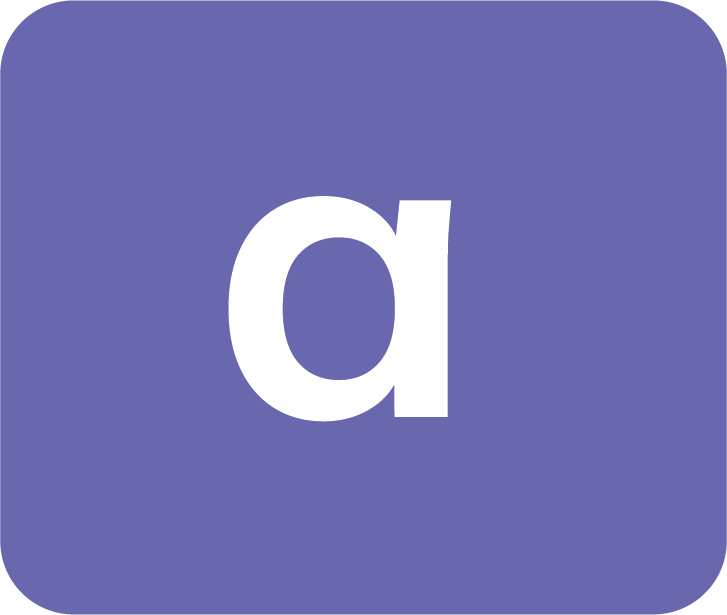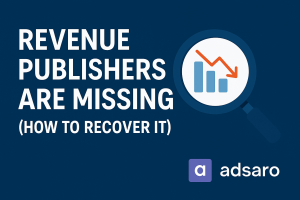The digital advertising industry is undergoing a revolution—and blockchain is leading the charge.
For years, advertisers and publishers have battled challenges like ad fraud, murky supply chains, and increasing data privacy concerns. Despite the growth of programmatic advertising, the ecosystem remains riddled with inefficiencies and trust issues.
That’s where blockchain in advertising comes into play.
By offering decentralized, transparent, and secure solutions, blockchain is transforming the way ads are bought, sold, and consumed. From eliminating fraud to empowering users with data control, this technology has the potential to reset the rules of digital engagement.
In this blog, we’ll dive deep into how blockchain is changing digital advertising, the core benefits it brings to the industry, and why it may be the future foundation of a fairer, smarter ad ecosystem.
1. Blockchain Advertising Transparency: A Trust Revolution
One of the most transformative aspects of blockchain in advertising is transparency. In traditional digital ad ecosystems, advertisers struggle to see where their ads appear, how they perform, and which intermediaries participate.
With blockchain, the system records ad-related transactions on a public or permissioned ledger that no one can alter or delete. It time-stamps and verifies every impression, click, and conversion. This visibility builds trust between brands, agencies, and publishers, ensuring effective media spend.
For example, a brand verifies whether the system displayed an ad on a premium news site or rerouted it to a low-quality domain through a shady middleman.
2. Fighting Ad Fraud Using Blockchain
Ad fraud is one of the biggest drains on ad budgets. Techniques like click farms, bot traffic, domain spoofing, and fake impressions cost advertisers billions annually.
Blockchain combats this by recording every digital advertising action—whether it’s a click, view, or conversion—transparently and linking it to a verified user identity. Since blockchain data is immutable and cannot be faked, fraudsters find it much harder to manipulate performance data.
Example: The blockchain ad platform Lucidity specializes in identifying discrepancies between reported and actual impressions in programmatic campaigns, reducing wasted spend.
Blockchain advertising benefits here include:
- Accurate performance tracking
- Real-time fraud detection
- Reduced reliance on third-party verification tools
3. Empowering Users with Data Privacy and Control
In an era of data privacy regulations like GDPR and CCPA, users are demanding more control over how their personal information is collected and used in advertising. Traditional ad tech stacks often rely on centralized databases and opaque consent mechanisms.
Blockchain and data privacy go hand-in-hand because blockchain enables decentralized identity management. This allows users to own and control their data—deciding when, how, and with whom it’s shared.
Example: A user might agree to share their browsing behavior with an advertiser in exchange for tokens or rewards, and that consent is recorded securely on the blockchain.
Benefits include:
- Higher user trust and compliance
- Transparent data usage records
- Enhanced targeting with full consent
4. Smart Contracts: Automating Ad Transactions
Smart contracts are self-executing programs stored on the blockchain. They automatically enforce the terms of an agreement when predefined conditions are met. In digital advertising, smart contracts automate ad buying, campaign execution, and payment processing.
This eliminates the need for manual reconciliation, reduces payment disputes, and ensures publishers receive payment only when verified results are delivered.
Example: A smart contract releases payment to a publisher only after it records 1,000 real, verified ad views—reducing the risk of paying for fake traffic.
Benefits of using smart contracts in advertising:
- Faster, automatic payments
- Reduced legal disputes
- Lower operational overhead
5. Enhancing the Ad Supply Chain with Visibility
The current ad supply chain includes middlemen like DSPs, SSPs, ad exchanges, verification vendors, and data brokers. This complexity often hides fees, causes inefficiency, and wastes budgets.
With blockchain advertising, the system records every participant in the supply chain, including the amount they take from the ad spend. This provides advertisers with clear insight into who is involved and how much value they add.
Example: Advertisers can audit the path their ad dollars take from budget allocation to final impression, and cut out underperforming intermediaries.
This leads to:
- Increased ROI for advertisers
- Fairer compensation for quality publishers
- Better accountability across the ecosystem
6. Token-Based Advertising: Incentivizing Engagement
A unique innovation enabled by blockchain is the ability to tokenize attention. Users can earn tokens for viewing ads, engaging with branded content, or sharing personal data voluntarily.
Platforms like Brave and BAT (Basic Attention Token) are pioneers in this space. Users who opt in to view ads receive BAT tokens, which they can use to support content creators or trade for real-world value.
Example: A user watches a 30-second video ad and earns BAT tokens, while the advertiser gets guaranteed, measurable engagement.
Benefits of token-based advertising:
- A more user-centric model
- Higher-quality interactions
- Better ROI for advertisers
Real-World Blockchain Advertising Platforms
Several companies are already using blockchain to transform digital advertising:
- Brave & BAT – Rewards users for ad engagement while protecting privacy.
- AdEx – A blockchain-based ad exchange with real-time bidding and fraud prevention.
- Lucidity – Focuses on reducing fraud and increasing supply chain transparency.
- Aqilliz – Uses blockchain for privacy-compliant marketing and engagement.
Challenges to Blockchain Adoption in Advertising
While the potential is huge, a few hurdles need to be addressed:
Scalability: Blockchain networks must scale to handle millions of ad events per second.
Integration: Existing ad tech stacks may resist major infrastructural changes.
Standardization: The industry needs clear protocols for blockchain-based advertising.
Education: Many advertisers and publishers still lack blockchain awareness.
Despite these challenges, momentum is building as brands and agencies explore pilot programs and real-world deployments.
Conclusion
Blockchain is more than just a buzzword—it’s a blueprint for the future of digital advertising.
As this powerful technology continues to mature, its potential to resolve long-standing issues in ad tech becomes increasingly clear. Whether it’s boosting transparency, eliminating fraudulent activity, or giving users control over their data, blockchain delivers tangible value at every level of the digital ad chain.
While challenges like scalability and integration remain, the shift has already begun. Brands and publishers that adopt blockchain solutions early will not only gain a competitive edge—but also contribute to building a more ethical, transparent, and efficient advertising ecosystem.
If you’re looking to stay ahead in the ever-evolving world of digital marketing, now is the time to explore how blockchain in advertising can elevate your strategy.








Leave a Reply